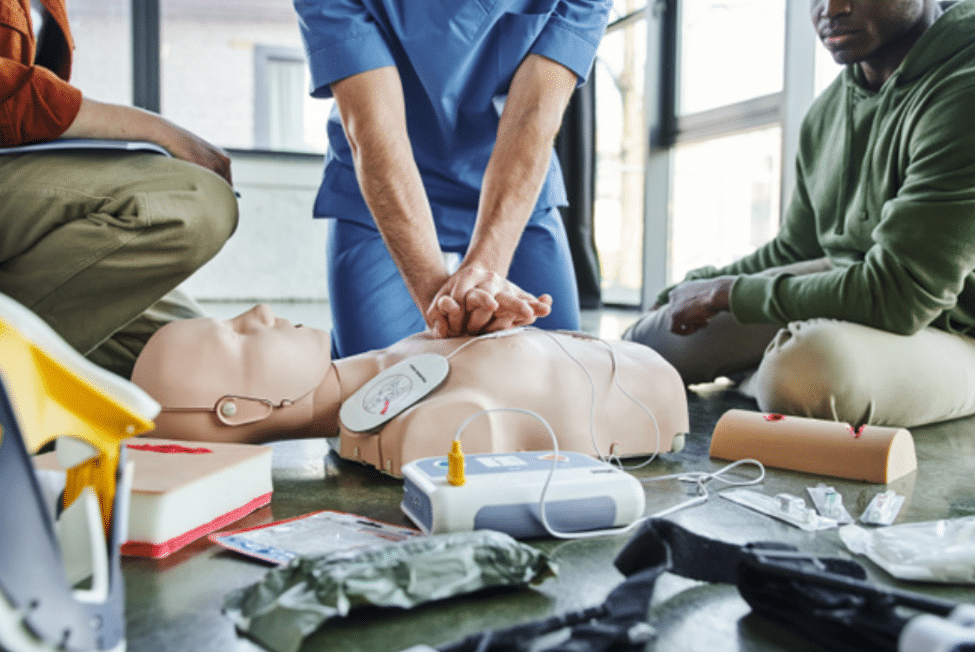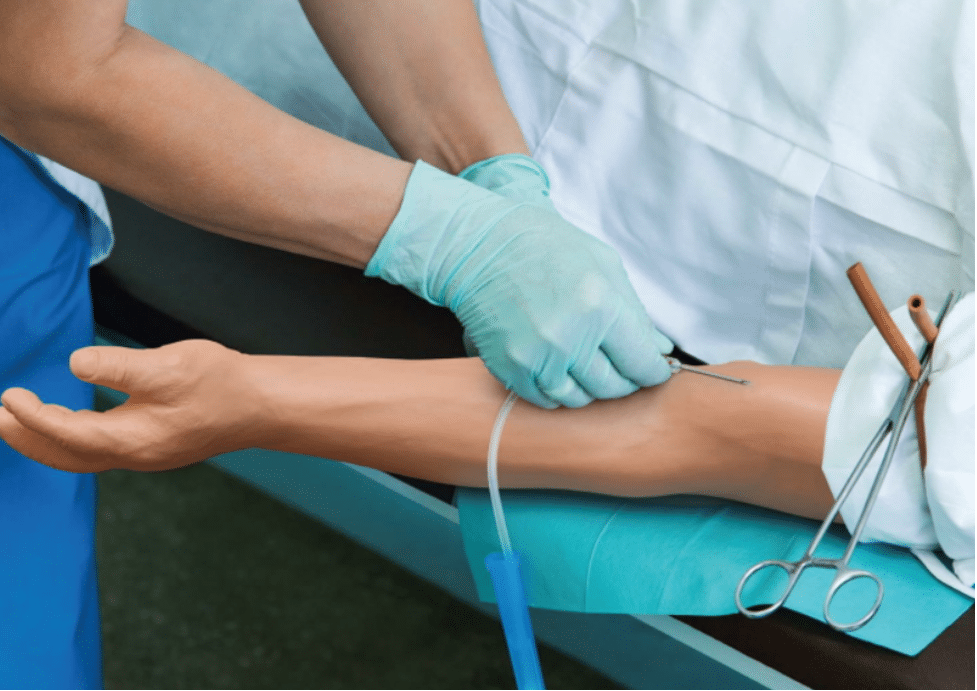Advancements in medical equipment have significantly improved healthcare delivery, enabling faster and more effective treatments. However, improper use of these devices can lead to serious consequences for patients. To ensure first responders and medical personnel can act swiftly and confidently in emergencies, proper training with medical training equipment is essential.
The Importance of Proper Medical Equipment Training

Training with medical equipment ensures healthcare providers gain hands-on experience in using real devices safely and effectively. Medical training aids are specifically designed to replicate real equipment while maintaining a safe and controlled training environment. Through these tools, trainees can familiarise themselves with various procedures, improving accuracy, safety, and confidence in real-world applications.
Additionally, medical training helps reinforce safety protocols and best practices, including sterilisation, disinfection, and infection control. Repetitive training in these areas fosters a culture of safety and professionalism, contributing to a secure clinical environment.
Essential Equipment Used in Medical Education
Medical education relies on a variety of medical training equipment to simulate real-life scenarios and help students develop essential skills. Below are some of the most crucial devices:
CPR Manikins
CPR manikins simulate the experience of administering cardiopulmonary resuscitation (CPR), providing tactile feedback that mimics the body’s response to chest compressions and rescue breaths. Some models also feature Automated External Defibrillator (AED) training pads, allowing students to practise defibrillation techniques.
CPR manikins are available in a range of sizes and types. Adult CPR manikings are used for standard adult CPR training while infant manikings are designed to simulate the smaller anatomy of a child for pediatric CPR training. Simple manikin models are often applied in training programmes focused on basic CPR training.
For a more complex learning experience, manikins with extra features are required. These features can range from CRP feedback to realistic chest recoil, changeable airway resistance, and several pulse points that can be used to replicate a variety of settings and conditions.
AED Defibrillator

AED trainers are simulation tools that replicate the function and operation of real Automated External Defibrillators (AEDs). They are specifically designed to teach students how to use an AED in a safe and controlled setting, eliminating the risk of delivering an actual shock.
By providing a realistic, hands-on experience, AED trainers allow students to practice key steps such as powering the device, attaching electrode pads, following audio and visual prompts, and delivering simulated shocks. This practical exposure helps build both confidence and proficiency. Since training AEDs do not administer real shocks, they ensure a risk-free environment, making them ideal for repeated practice.
Many AED trainers come with pre-programmed scenarios that simulate different heart rhythms and patient conditions. This helps prepare trainees for a range of emergency situations, improving their ability to respond effectively.
During training, participants learn important considerations such as ensuring the person is dry before applying AED pads, avoiding pad placement over an implanted pacemaker or defibrillator, and the importance of staying calm and following the AED’s instructions carefully to maximize the chances of survival.
Suturing Models
Suturing models are training aids that allow students to practice suturing techniques in a realistic, hands-on manner. This equipment is designed to
simulate human skin, muscle and tissue, allowing students to develop essential skills needed for wound closure and surgical procedures. These skills include simple interrupted, continuous, mattress and subcuticular sutures and knot tying and tension control.
Types of suturing models include:
- Silicone-Based Skin Pads – Mimic the texture and elasticity of real skin.
- Foam and Rubber Models – Affordable and reusable for repetitive practice.
- Animal Tissue Models – Offer a more realistic, biological feel.
I.V. and Injection Trainers

These trainers help students learn how to administer intravenous (I.V.) lines and injections safely and effectively. With the help of these tools, students develop essential skills such as locating veins, inserting needles, administering medications, and securing I.V. lines, all while minimising patient discomfort and the risk of complications.
Furthermore, injection trainers help students understand the importance of infection control and aseptic procedures, reinforcing best practices in preventing contamination and reducing the risk of medical errors.
Different types of injection trainers are available for different training purposes. Basic injection trainers are used for learning how to inject fluids into a vein, simulate blood draws or administer medications. They’re often realistic arm models that mimic human veins, including features like skin texture, veins and puncture resistance. Intramuscular and subcutaneous injection trainers, on the other hand, come with simulated muscle and fat layers to allow students to practice applying injection at the correct angle and depth.
Catheterisation Trainers
These trainers provide a realistic simulation of both male and female anatomy, helping trainees practice proper catheter insertion techniques, aseptic procedures, and patient care protocols in a controlled environment. By using catheterisation trainers, learners gain hands-on experience in reducing discomfort, preventing infection, and ensuring correct placement, which is critical for patient safety.
Repeated practice on these models enhances confidence, precision, and procedural efficiency, minimising the risk of complications when performing catheterisation on real patients. These trainers are widely used in nursing, urology, and emergency medical education, making them essential for mastering this essential clinical skill.
Endoscopy Simulators
Endoscopy simulators are another type of essential tool in medical training, providing a realistic, hands-on experience for students and healthcare professionals learning minimally invasive procedures. These simulators allow trainees to practice maneuvering an endoscope, navigating internal anatomy, and identifying abnormalities in a controlled, risk-free environment before working with real patients.
By simulating different conditions, such as gastrointestinal disorders or airway obstructions, they help students refine their hand-eye coordination, depth perception, and procedural accuracy. Additionally, endoscopy simulators emphasise the importance of infection control, patient comfort, and safe technique, ensuring trainees develop the skills necessary to perform procedures efficiently and with minimal complications.
Final Words
Medical training equipment plays a crucial role in preparing healthcare professionals for real-world scenarios. From CPR manikins and AED trainers to advanced endoscopy simulators, each tool offers hands-on experience in a safe, controlled setting. Investing in high-quality training equipment ensures that medical personnel develop the skills and confidence needed to deliver safe and effective patient care.
